Ash, SFX, Dublin, 1998
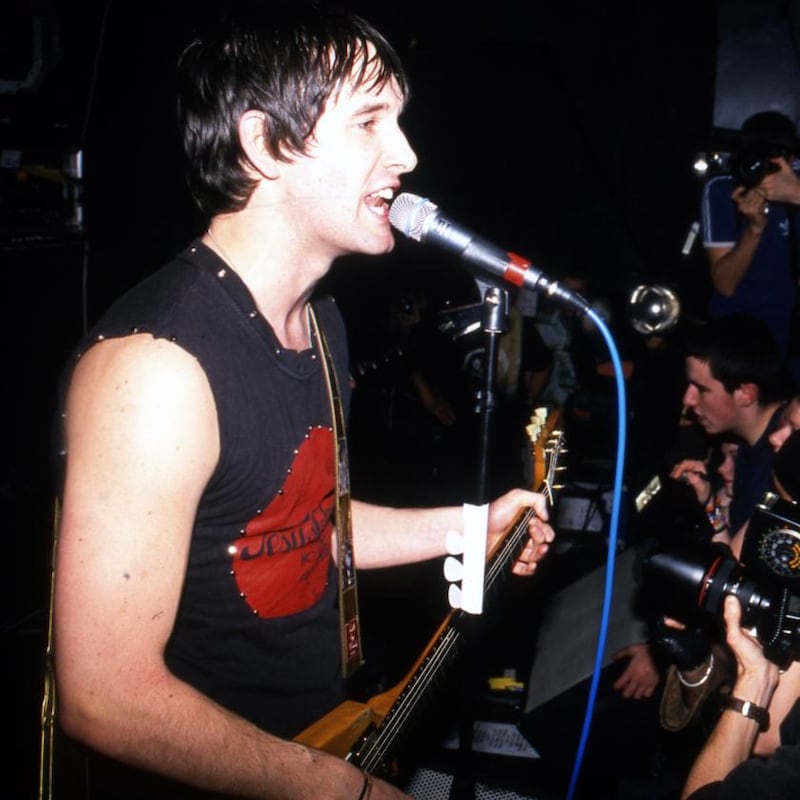
I was 15 when I went to see Ash on a Monday night in Dublin. When I recall the gig now, what returns is the maelstrom; being inside an industrial washing machine of elbows and chorus-roaring so intense it often flung me towards the side of the hall, plopping out on to the floorboards and adjusting my inward-folding Converse heels. When it was over, I walked out, sweaty hair stuck to my forehead, the first of many notes departing my ringing ears, elated. The desire for this feeling became an almost singular drive. The people who wrote about music in magazines and newspapers were as alien and unobtainable to me as the musicians on stage, but a few months after this show, I began my own writing-about-music career. Whenever I cross a venue threshold, I'm still looking for the energy I experienced that night, and often I find it. Not having that therapeutic release throughout the pandemic has created a torturous deficit. – Una Mullally
Prince, Malahide Castle, Co Dublin, 2011

Prince made us wait. A 2008 gig at Croke Park was cancelled with minimal explanation, resulting in a legal tussle between the artist and his Irish promoter, MCD. But in 2011, the stars did their cosmic Batdance over Malahide Castle; His Royal Badness was finally ready to hold court. When he emerged on stage, it's one of the few times I've been overcome with emotion by just being in the presence of another human being. If genius can be defined as extraordinary creative ability, then this was as close to witnessing a superhero in flesh and blood as we get on this planet. Prince appeared as the spiritual manifestation of musical brilliance and undiluted star power. Never has the importance of connecting performer and audience seemed so clear. "I'm sorry it has taken so long," was his apology to his fans for the dramatic three-year deferral. But who cared at that point? Prince blazed the hits. And when a light shower fell during his performance of Purple Rain, it was a moment as magical and inexplicable as his oeuvre itself. – Dean Van Nguyen
David Bowie, HQ, Dublin, 1999
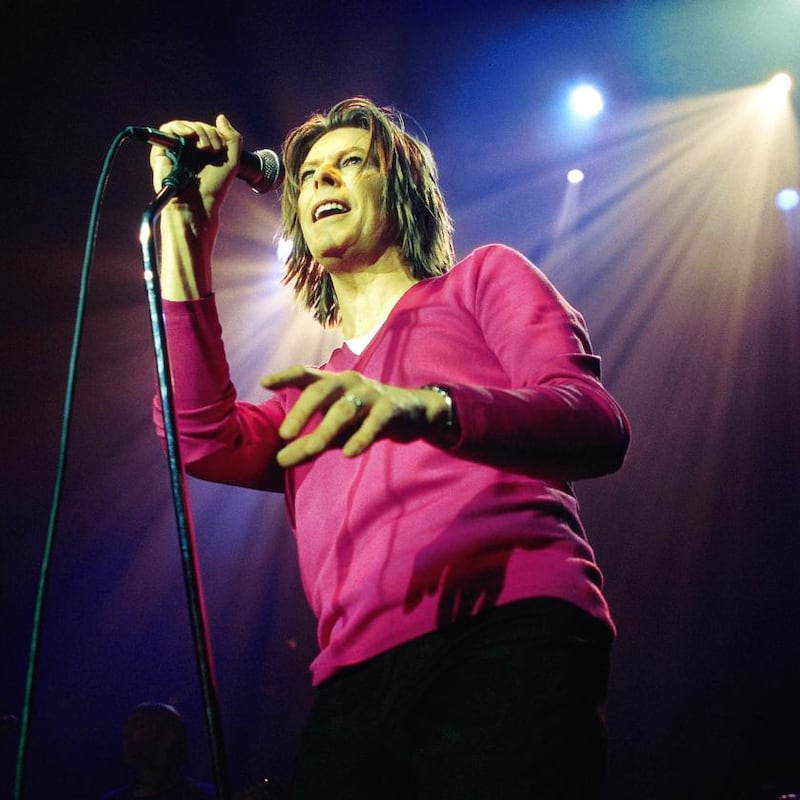
"Invited guests only," stated the ticket, the implication being that if your name wasn't on the clipboard at the entrance to Middle Abbey Street's HQ (which has been The Academy music venue for many years) then there was no way you were getting in. Bowie, who I had met and talked with some hours previously (definitely a "Thank. You. God." moment) was in Dublin as a guest of Guinness, the main sponsor of Witnness Festival, the forerunner of Oxegen. He had a (very good) new album, Hours, to plug, but he made sure to include seven back catalogue classics in the 14-song set. Sandwiched between the first song (Life on Mars) and the last (Rebel Rebel) were China Girl, Always Crashing in the Same Car, Word on a Wing, Changes and Drive-In Saturday. What can I say? It was amazing. It was emotional. It was a privilege. It was one of those dream-come-true moments. Perhaps, even, the dream? – Tony Clayton-Lea
Séamus Begley and Steve Cooney, O’Shea’s Merchant, Dublin, early 1990s
Feral. Unchained. Addictive. Séamus Begley and Steve Cooney's seminal album, Meitheal, was not so much released as unleashed in the early 1990s. It was a full force gale that ripped through our expectations of what traditional music should be and do, with the driving percussive force of Cooney's guitar jump cutting across Begley's accordion. The launch gig was held in O'Shea's Merchant in Dublin. "Ó sé go sé in O'Shea's" was Séamus's invitation: from 6 (pm) to 6 (am) in O'Shea's, for what one of the mightiest nights of music I'd ever experienced, then or since. The pair were on fire from the get go. The west Kerry set dancers were flying, and Séamus' eyebrows were jousting with every hairpin bend in their polkas and slides. This propulsive force was both natural and unnatural, celebratory and soulful. It was a homecoming that we didn't realise we needed. And a gift that's kept on giving ever since. – Siobhán Long
Kendrick Lamar, Vicar Street, Dublin, 2013

Wearing a hoodie and backed only by a DJ, all 5ft 6in of Kendrick Lamar stood tall in Vicar Street. A kinetic energy flowed between the commanding Compton man and the awestruck Dublin crowd, who heaved like racehorses at the finishing line between songs. The harder we hit, the heavier he swung back, rolling Backseat Freestyle into Bitch, Don't Kill My Vibe and Poetic Justice. Steam rose from our bodies like smoke. Three months after the release of his groundbreaking second album Good Kid, M.A.A.D City, his debut Irish show coincided with his star status transitioning from "one to look out for" to "the one". Playing to 2,550 people, the gig sold out within minutes and anyone seeking last-minute ticket from touts or guest list from organisers was met with incredulous rejection. A heavyweight in hip-hop, had this tour happened any later than it did, neither Lamar or his fans would have experienced this intimacy. – Louise Bruton
Ennio Morricone, 3Arena, Dublin, 2019
My answer to this question constantly changes, or perhaps rotates, from the first time I saw Radiohead, to Björk in Reykjavík, and Kate Bush in London. Live concerts have been a staple of my life since I was a teenager. From dancing to Erol Alkan in a dingy Dublin black box, to experiencing the epic wonder of Kendrick Lamar amid balmy Barcelona air.
When the late Ennio Morricone performed at the 3Arena in 2019 with the Czech National Symphony Orchestra, it was the last night of his European tour. Experiencing his compositions, from the theme to Cinema Paradiso, to The Battle of Algiers was profound; full of intensity and majesty. At different turns I was transported back to childhood, to watching Sergio Leone films on rainy Sundays (for it always seemed to be raining) with my father. It returned me back to sacred memories, while inspiring new ones. That's the potent possibility of such live experiences. – Siobhán Kane
Lorde, Alexandra Palace, London, 2017
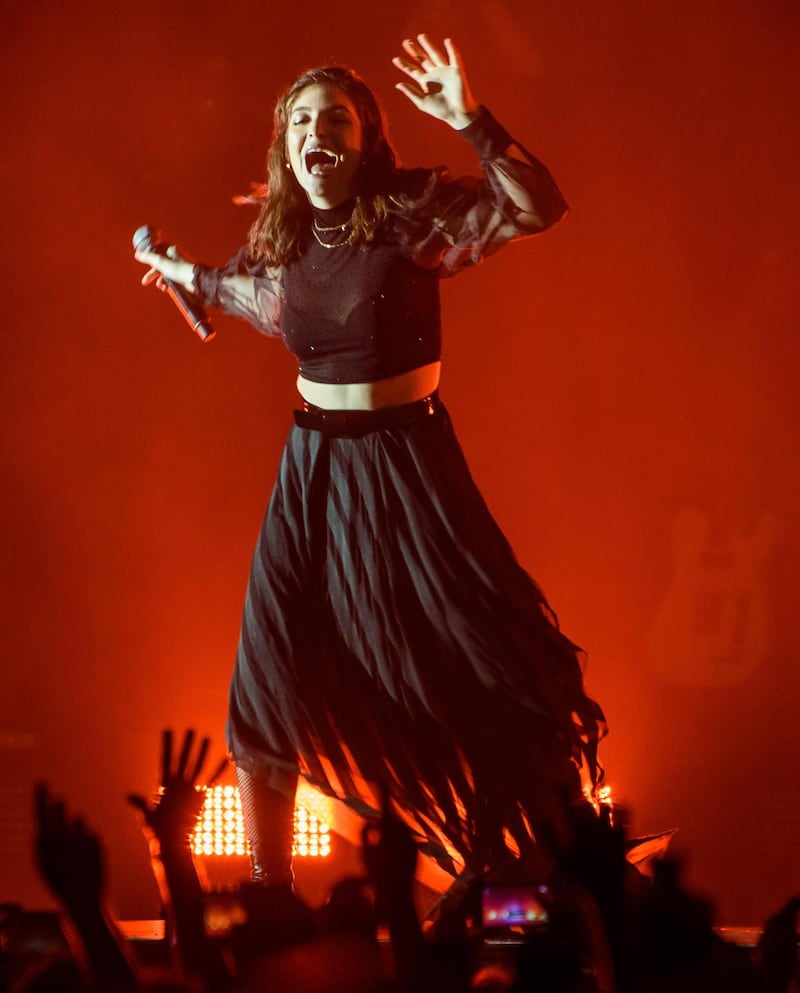
On a rainy Wednesday one September, my best friend and I trudged up a steep hill to Alexandra Palace – a cavernous north London venue that overlooks the city – to watch Lorde perform her sophomore album Melodrama.
And the poet laureate of adolescent histrionics couldn’t have been blessed with a better backdrop to showcase an album that turns “graceless nights” into something “wild and fluorescent”. That evening a 20-year-old Lorde proved her uncanny ability to make the melancholic and mundane feel brave and heroic. “Feel the party to my bones” she sang with a wry smile to the crowd as we danced and sloshed cheap wine from plastic cups all over the floor.
On the closing track of Melodrama, Lorde muses on her endless pursuit to find Perfect Places. "What the f**k are perfect places, anyway?" she hummed over the song's outro. And in a torrential downpour on a weekday night in north London, she came pretty close to finding the answer. – Finn McRedmond
Bruce Springsteen, Brighton Centre, England, 1981

The Brighton Centre was the only UK venue on Bruce Springsteen's 1981 The River tour that had not sold out – at least it was the only show for which we could buy tickets. There was a perception that the May 27th gig would be a quiet night out before he and the E-Street Band marked their elevation to rock royalty with six sold-out shows in London's Wembley Arena. In the event they played as if their very lives depended on turning a staid conference hall into a steaming rock 'n' roll revivalist meeting. No retreat no surrender. Reading the rollcall of songs on setlist.com serves to remind of Springsteen's peerless stagecraft, how at 32 he knew instinctively how to enlist an audience in his search for rock 'n' roll redemption. Almost four hours later the deal was sealed. That was the first time I saw him live. In all the times I've seen him since he has never been better. – Joe Breen
Mary Black and Striknien DC, Goffs and Old Chinaman
I was 11 years old at the first gig I attended. My mother and father had tickets to see Mary Black play at Goffs in Co Kildare, a place where you might usually go to buy a horse, and at the last minute my younger brother had a complete meltdown. He couldn’t be left with the babysitter (he’s still incorrigible), so my father had to stay with him. My parents had me dress in my best clothes, which included a blazer and slacks, because I was a fancy little gentleman in those days. And I accompanied my mother to the concert like a high-society walker. My memory of the gig is that Mary Black was in very good voice, that her guitarist had a nice moustache and at the interval my mother had a glass of wine and I had a glass of 7Up. I imagined then that this was what my adult future looked like – me in a nice blazer attending concerts with my mother.
About seven years later my friend D took me to see the Dublin punk band Strikniën DC play in the horribly named Old Chinaman pub in Dublin, and I watched people pogoing and spitting in a tiny space as the singer screamed and threatened people and guitarists grinded away. I was no longer a fancy little gentleman and there was no intermission. On the plus side, one of the barmen had a sideline selling hash over the counter and the pints were suspiciously cheap.
Nowadays, when envisioning the perfect gig, I split the difference between these two experiences. I wouldn't at all say they were the best live concerts I've been at, but ever since attending them all my live-music experiences are measured along a spectrum that goes from Mary Black in Goffs to Strikniën DC at the Old Chinaman. – Patrick Freyne
The Teardrop Explodes, McGonagles, Dublin, 1981
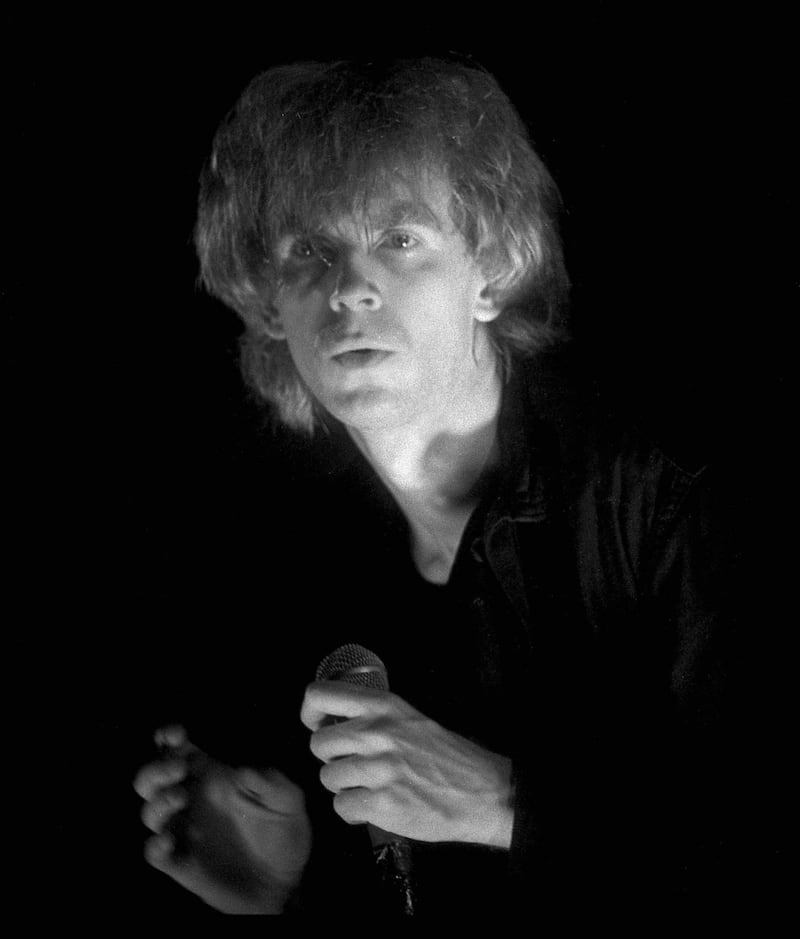
The gig which still crackles most freshly in my brain. Much of that is to do with the psycho-anarchic stagecraft of the still eccentrically upright Julian Cope. Acts are occasionally praised for "playing the audience like an instrument", but rarely can the compliment be read literally. Taking the stage with no brass section, Cope – owner of the coolest fleece-lined flying jacket in postwar Liverpool – got us to yell out the parped riff that had recently sent Reward to number six. Promoting their brilliant second album Wilder, the Teardrops were at the height of their psychedelic powers and, as is so often the case when bands crest, preparing to, ahem, implode. But the gig also registers because, still not quite 18, recently out of school and learning how not to attend university, I was being propelled into an uncertain and exciting future. So was a teenage Courtney Love, rumoured to be in attendance, and a fresh Tom Dunne, whose first band The End supported. "We felt like we'd won the lottery," Tom tells me. – Donald Clarke
Lana Del Rey, Vicar Street, Dublin, 2013
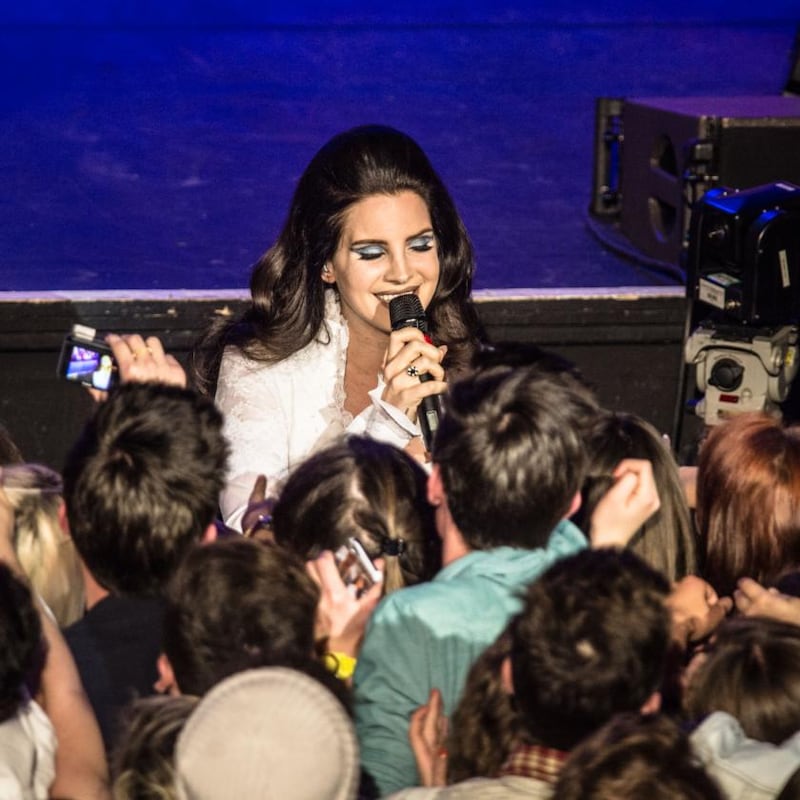
One morning in May 2013, I was drawn into a frank exchange of views with a woman who tried to cut me off as I was turning on to a motorway ramp. "My wife," I shouted out the window, "is giving birth!" She was actually about to do so twice, as our twins were very much en route. And as we sped towards hospital, my better half inhaling with each contraction, one song pinged around my cranium. "I got that summertime, summertime sadness," it went. "Su-su-summertime, summertime sadness." Summertime Sadness was lodged in my head. And with good reason. Thirty-six hours previously I'd watched Lana Del Rey take to the stage at Vicar Street in all her enigmatic glory. She was in Ireland for her first ever shows – though, as fans rushed forward to hug and give her gifts, it felt more like watching Princess Diana working a rope-line. With on-brand stateliness, she had proceeded from the hip-hop infused Blue Jeans to National Anthem and Summertime Sadness. A day and a bit later, my life had changed profoundly. And Lana Del Rey at Vicar Street had provided the wispy, woozy soundtrack. – Ed Power
Ramones, State Cinema, Dublin, 1978
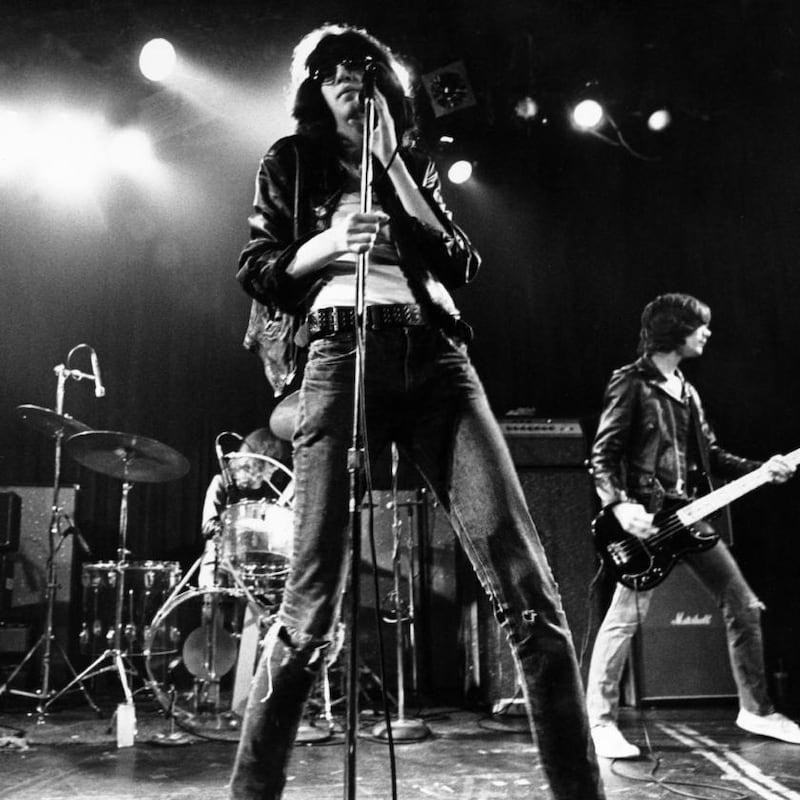
"Onetwothreefour," shouts a Ramone and that's all it takes. The crowd in the stalls of the Phibsborough fleapit go – there are no other words – f**king mental. Bouncers back off fast. Seats get smashed. It's not violence, really, just sheer, pure intensity, a particular sort of fierce communal joy. Everything feels mythic. The band are pop-art cartoons made flesh and muscle and sweat. Joey dangles off his mike stand like a praying mantis, Johnny and Dee Dee square off on either side, legs splayed, guitars slung low. The band rip through one buzzsaw bubblegum anthem after another – Judy Is a Punk, Rockaway Beach, Teenage Lobotomy – all delivered at jetfighter-level decibels. How long does it last? I dunno. Time and the laws of physics have been suspended. And then it's over. These days the State is a furniture showroom. Joey, Johnny and Dee Dee are long dead. I am not 15 any more. But my ears are still ringing. – Hugh Linehan


















